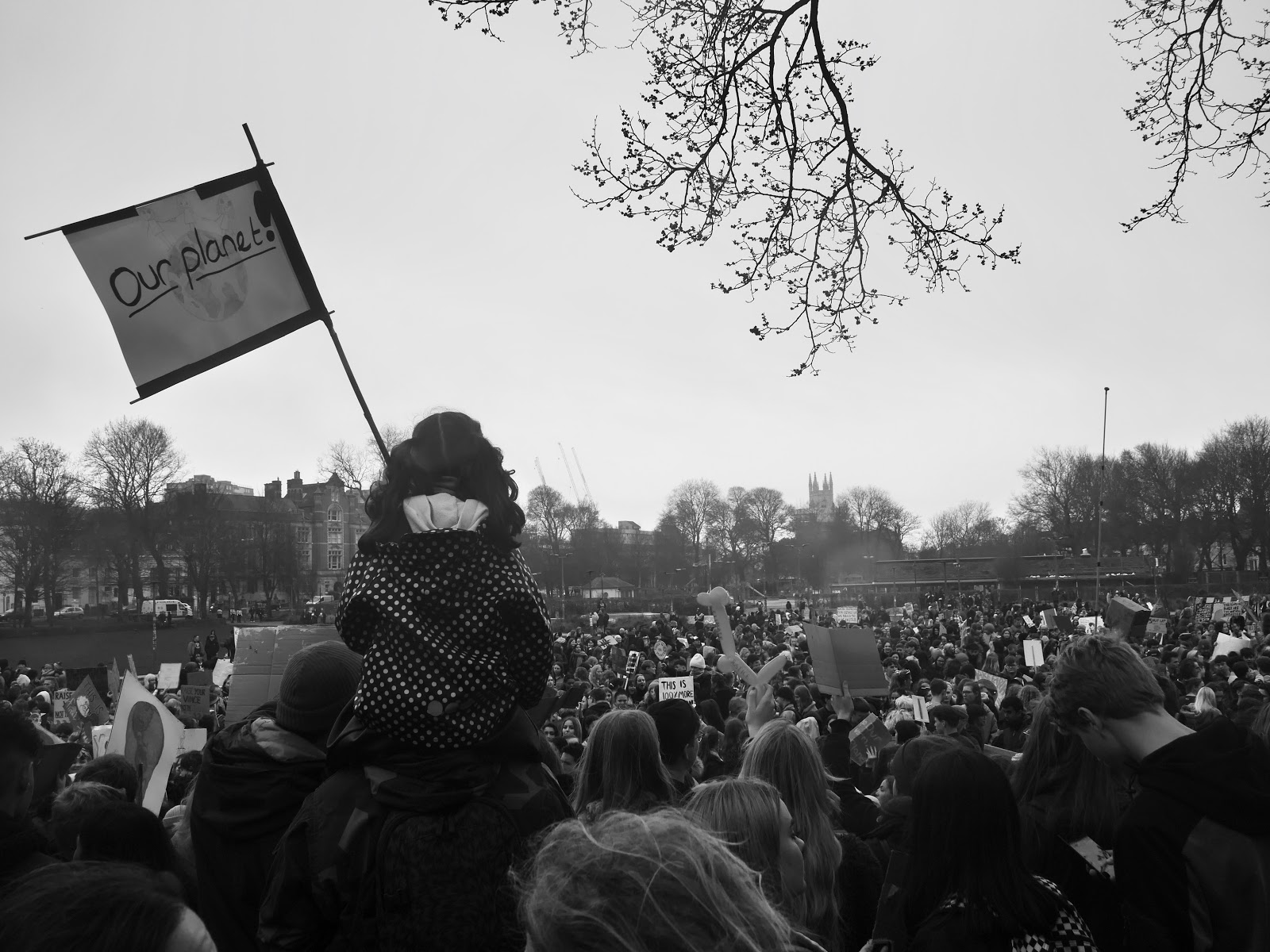Water pollution and contamination, overfishing, floods, rising water temperatures and sea levels, lack of fresh water… Our planet, whose surface is covered by more oceans than continents, is threatened by a rapid change of climate and environmental degradation. In mid-March, thousands of young students all over the globe stood up and fought for the acknowledgement of these threats to our life basis and demanded of world leaders to take action–for the sake of our future.
“1-2-3-4 climate is what we are fighting for, 5-6-7-8 tell the world it’s not too late!”
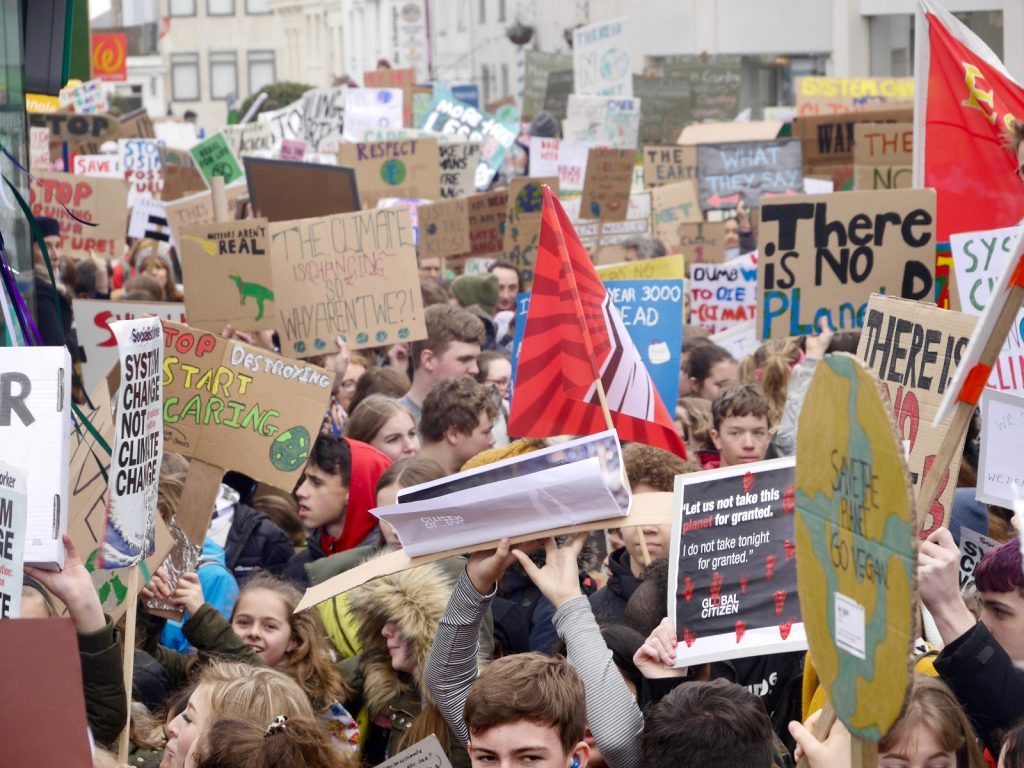
15th of February at 10:40 am, at the clock tower in Brighton, UK. The sun is shining, perfect demonstration weather, people are walking around in T-shirts, even though it is, according to the calendar, winter. The strike will start in 20 minutes, but already a big group of people is gathering, unpacking their posters, talking, giving interviews to curious journalists. Once in a while they break out in spontaneous chants:
“What do want?–Climate action!
When do we want it?–Now!”
With every green traffic light, more people are coming and are welcomed with loud cheering from the crowd.
“Skolstrejk för Klimatet”
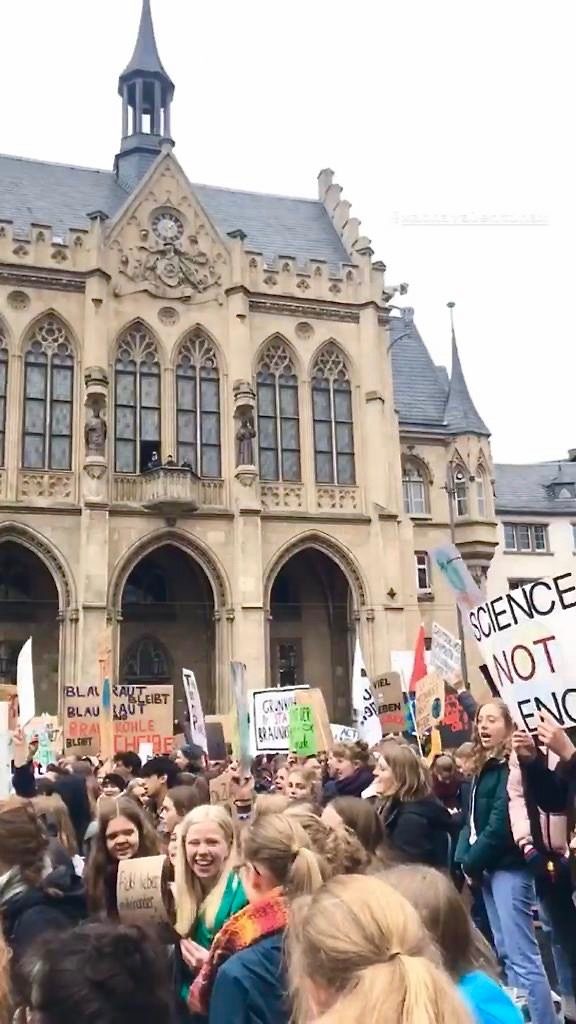
The by now often told story sounds almost magical, how fast the FridaysforFuture movement gained popularity and support. It began with one girl, at that point 15 year-old Greta Thunberg. She started missing school and instead striked every day in front of the Swedish Parliament in Stockholm, next to her a self-made sign, while informing people with flyers about the dangers of climate change. After the general elections in September she continued striking every Friday until now, planning to continue until Sweden has met the goals of the Paris Agreement. This inspired students in other European countries and beyond to organise their own strikes. The movement quickly picked up speed. Latest, after Greta was holding a speech at the annual UN Climate Conference at the end of 2018 in Katowice the world took notice of her. Through demanding cooperation instead of competition, she is now nominated for the Nobel Peace Prize.
Not that it would have always been easy. Greta answers accusations about being paid, used by others or not writing her speeches herself. Others criticise that students are missing classes. Politicians threaten with penalties for those students who are missing out on their education, arguing that children would not know enough about how the world functions and should leave politics to the adults. Others, like Greta’s headmaster, a range of university professors, scientists, politicians, and a wide public morally support their students.
The movement’s message is not about knowing it better than adults. It is about reacting. To treat it as the crisis it is, even though it has been unfolding over centuries. To make the concerns of the future generations regarding the climate a priority.
Several organisations, protest movements and famous personalities exist that take action for a change in climate politics. What is different about this one?
“Only one climate, only one chance!”
The first particularity that catches the eye is the age of the protesters: it is a demonstration of children. Parents, who are joining their kids raise the average age about years. The majority consists of the youth–from primary school to university age. She is “just a child” was said about Greta Thunberg. World leaders should not forget or underestimate the power of children. And especially in issues as those regarding the environment, where the future counts more than the present, they have to say something, engage in politics and are not the disinterested as sometimes referred to. Politics is oriented towards the interests of ageing societies, while the students standing on the streets these Fridays will have to live with the policies made for a different generation. This is why, beneath climate action, a voting right from the age of 16 is one of the main demands of the crowd.
Even more impressive is the energy of the kids. When you are standing in the crowd of young people, it is hard to believe that the accusation the students would only enjoy a day without school has any solid foundation. They are standing there for a reason; because they are concerned about their future. The effort they put in designing their colourful posters is telling: they want to be able to do something and not only listen the news of hazardous weather catastrophes. It seems like Greta has shown not only world leaders that they have to act, but also the Youth. We need to show that we care about our future, because when we are loud enough about it others will have to listen. One person and her endurance was enough to trigger thousands to raise their voices. These young people are aware of their privileged situation in Europe–and they don’t rest on it but demand from themselves to take action.
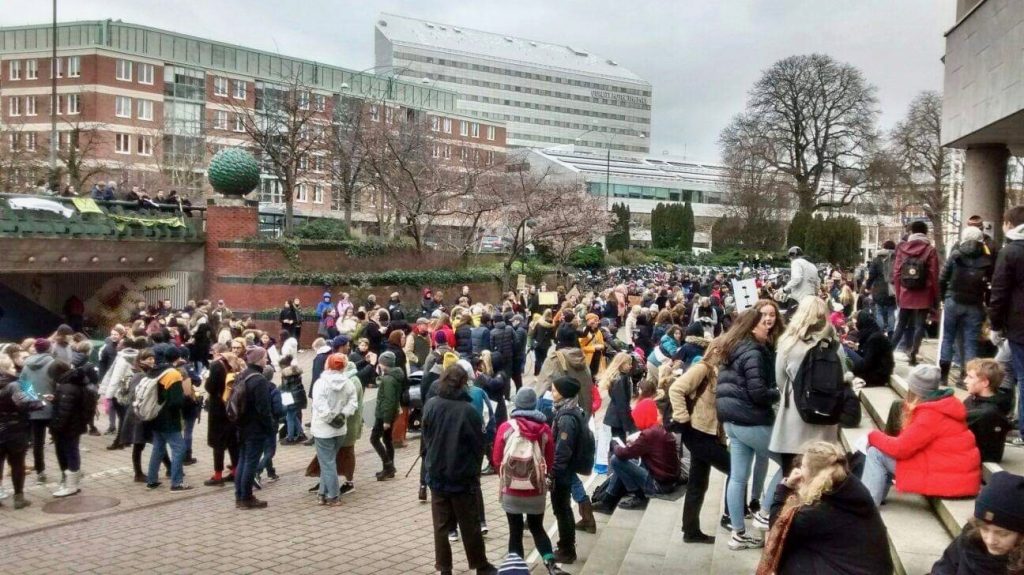
“Many people don’t seem to understand why we are doing this”, says one of the speakers. They value their education, but want to have the right education. The environment and climate change should not be marginalised in schools, where it is only mentioned occasionally in geography lessons. Instead, it should be a priority and an issue addressed in many subjects, move to the centrality it deserves. The strike in Brighton does not only involve noise-making on the streets but also workshops to learn something from this day. Without teaching about the seriousness of climate change and solving approaches, future generations might not be much different from the present ones and will not save the planet.
“My arms are tired”
15th of March, a Friday again. Around seven months after Greta’s first strike, the movement has reached its peak to date with a world wide strike: the girl who started it is now joined by around 1.4 million students in 128 countries around the globe.
The weather is less good than last month, but even more people have been coming. The youngest participants are likely to be less than ten years old but are chanting like everyone else. Some parents are accompanying their children, you can spot teachers and an old lady in support of her grandchildren’s future. People are coming out of their houses and shops to watch and applaud. One man says: “Well done, kids.”
The energy of the children has no limit. When it is too silent for a few seconds, one person starts chanting and the rest responds. Some are angry shouts against certain politicians, others rhymes for climate action. When the crowd reaches the park, you can finally see the true amount of people–and they are getting more.
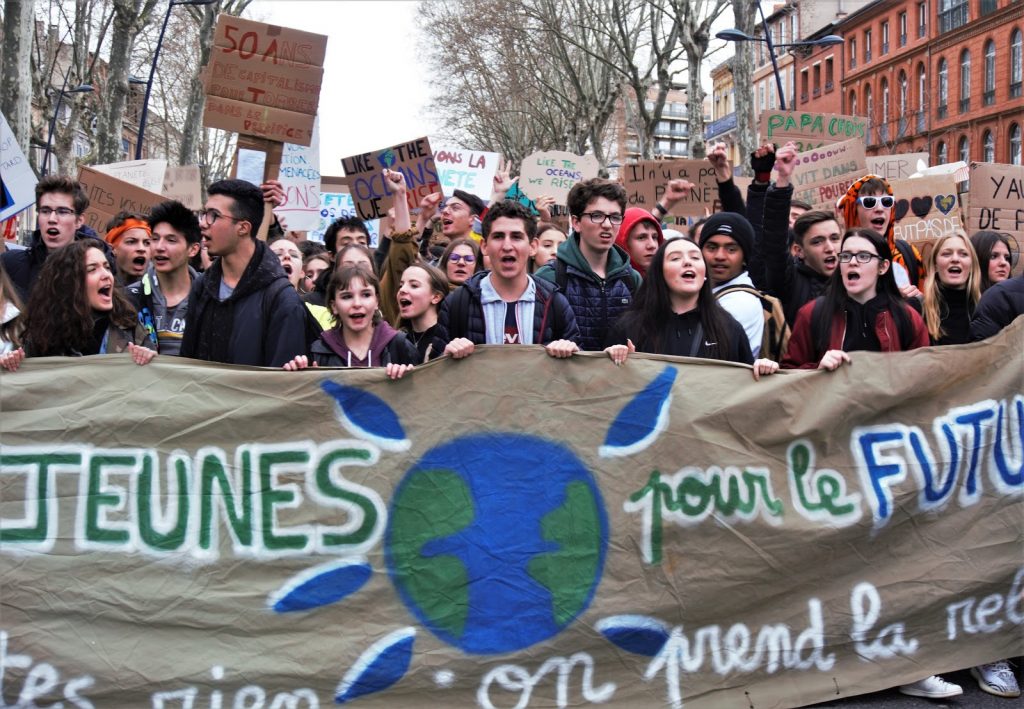
The one or another political group is trying to use the dynamics for their cause. But the movement itself does not belong to any organisation or institution. As an example of mobilising modern activism it arose from nowhere–and might disappear when its purpose is fulfilled. A community for a moment, united to draw attention on the human impact on our environment. And attention is something they certainly attracted as the biggest climate protest ever to take place so far.
One of my favourite signs says at the back that the student is tired of holding it. It is time to act, for children and for adults.
Greta Thunberg became vegan, travels only by train and convinced her family to do the same. But she knows that strong political and economic actions are needed to bring about the necessary change. Not only personal hope or movements like the “FridaysforFuture” are important, but especially action.
And no matter what pessimists say about the usefulness of these students’ actions: when politicians start to get worried because students are now missing one day of school weekly, it means they notice that something needs to happen. Until then, the students might not come back.
by Nina Kolarzik
Photo Credits
Erfurt, Victoria Köhler, All Rights Reserved
Malmö, Katya Lee-Brown, All Rights Reserved
Toulouse, Merle Emrich, All Rights Reserved
Brighton, signs & title picture, Nina Kolarzik, All Rights Reserved
